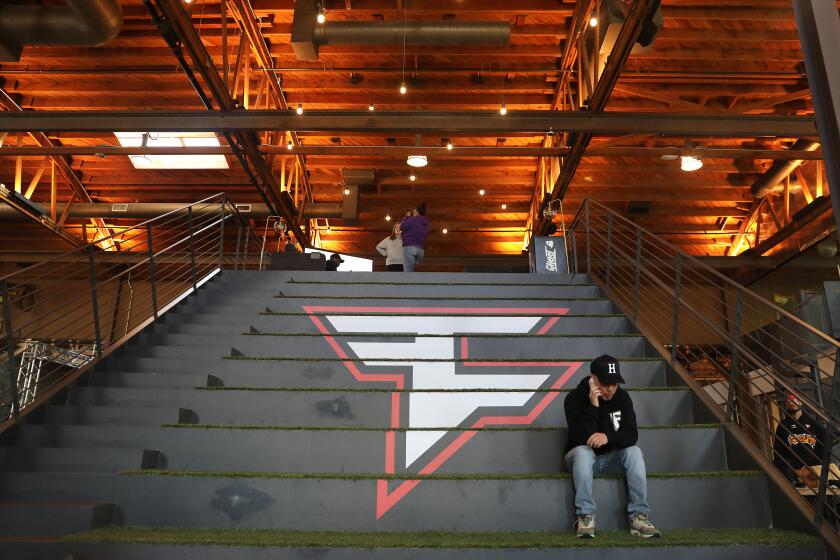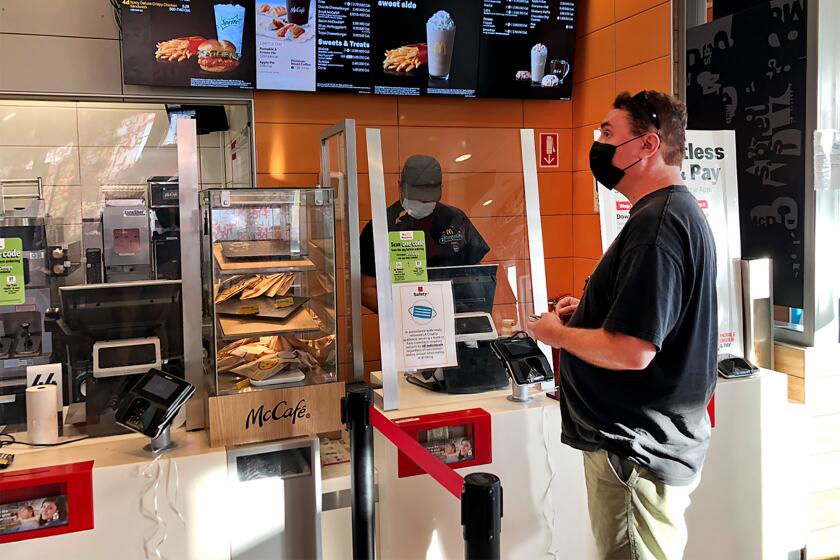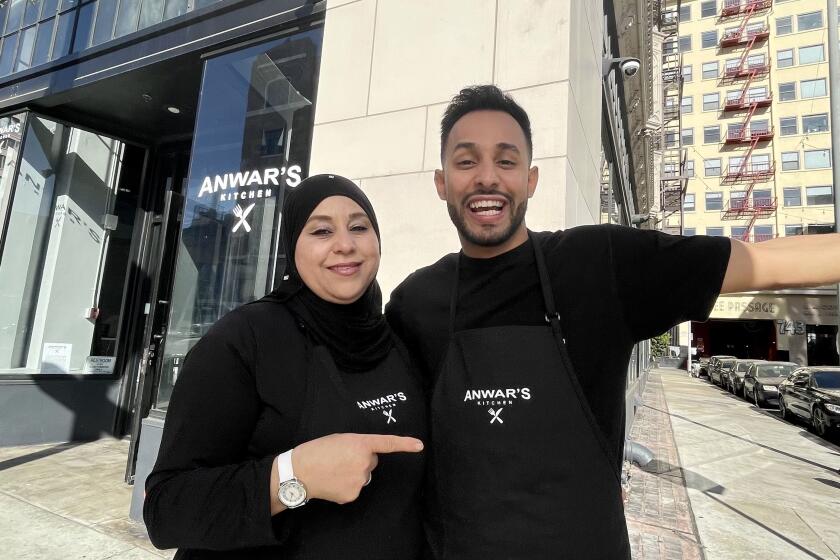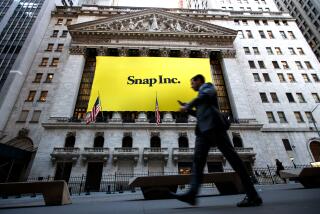So you want to be a social media star? Here’s how to make money as an influencer in 2024

- Share via
Half a trillion dollars. That’s how large the creator economy, currently pegged at $250 billion, is predicted to grow in the next four years, according to Goldman Sachs.
While people have been making a living off of creating content for online audiences for nearly two decades, what was once a nascent industry is growing up. Brands are getting more strategic about influencer marketing, a thriving ecosystem has emerged to serve creators and their needs, and social platforms are increasingly nudging consumers to spend while they scroll.
What does this mean for influencers and their audiences? The Times asked those who have been in the creator economy for decades to opine on what the new year will bring. We’re still in the early innings, they said, but in 2024, the industry will continue to mature in significant ways.
It will get tougher to build a ‘real’ business.
Most creators start off as one-man bands. They brainstorm, film, edit and post content on their own. Day by day, they grow their followings, and eventually begin to make money. But then what?
“There are two options: You either bring in a manager or agent externally, or you hire a COO or business partner internally,” said Jon Youshaei, a creator and founder of Youshaei Studios. “And more and more, I’m seeing creators bring in a right-hand person internally.”
Worsening economic conditions could be a stress test for the burgeoning influencer economy. But online creators are pivoting by telling viewers what not to buy.
A lot of this has to do with competition. Although the barrier to entry has never been lower, building a “real business” in the creator economy is getting harder, Youshaei said.
Blake Michael, chief strategy officer of Fourteen Media Group, a consulting firm for creator economy startups, said this necessitates bringing in outsiders to help with growth strategies.
“Niche verticals are so quickly becoming saturated, and that means you’ve got to put more effort into your content to stand out,” Michael said.
Companies will be more selective about who they work with …
In the early days of influencer marketing, creators quickly attracted money and attention from companies clamoring to get in on social media. This year, businesses won’t be as willing to throw money at any influencer that comes their way.
“I just think they’re getting a lot smarter,” said Joe Gagliese, co-founder of Viral Nation, one of the world’s first influencer marketing agencies. “They want to understand: Does this person really align with my brand? What are their views and perspectives on things that might not align with my brand?”
As brands become more disciplined in their efforts in 2024, they will increasingly want to see results they can measure, Gagliese said.
Meet Lynette Adkins. She’s part of a new crop of creators focusing their content on the how-to of the business: making money from an online following.
Two influencers who may look the same on paper might produce completely different results. Companies are learning to look at metrics such as community engagement over number of followers, and they’re scrutinizing the type of relationships creators have with their audience.
“There’s creators who people look to and trust for their opinion, and then there’s creators who folks like to be entertained by,” Gagliese said, “and those two types of engagement are very different as it relates to being able to help a brand.”
… But this could mean more opportunities for ‘micro influencers.’
Counterintuitively, the push to formalize channels of influencer marketing will mean more opportunities for creators with smaller followings.
Traditionally, several “inefficiencies” have slowed down the process when companies want to work with influencers, said Zach Ferraro, head of strategic partnerships at Fourthwall, a platform that helps creators sell products and launch memberships.
First, brands had to look for the right creator — and often they didn’t know exactly what they were looking for or what to expect realistically in terms of outcomes, Ferraro said. They had to go back and forth with a manager on rates, which can vary widely, and provide deliverables, such as a certain number of Instagram posts or videos.
To make it worth the friction and costs involved, brands would look only to ink larger deals.
Hollywood based esports and web culture company FaZe Clan recently went public in a reverse merger valued at $725 million.
But as companies have become more experienced, platforms that connect creators with brands have proliferated and the process has become more transparent. For example, the company F*** You Pay Me, allows creators to anonymously review brands they’ve worked with and share how much they got paid.
“Smaller, mid-tier micro influencers are going to get more opportunities as friction goes down,” Ferraro said.
Gagliese of Viral Nation agrees.
“I think that creators who have really developed core audiences and communities and have the ability to convert and create those business outcomes will likely get paid more,” he said. These are the influencers who might not have millions of followers but boast smaller, devoted audiences.
Another possibility is for brands to hire smaller creators for in-house content, Ferraro said. “Middle-class” creators who might not be doing as well financially as they want to be could find opportunities offering their expertise to brands looking to build their audiences.
Consumers will pay you for your content too.
With the advent of in-app “tipping” features on social platforms, creators have another way to make money: Their fans can pay them directly without going through a third-party platform, such as Patreon or Buy Me A Coffee.
On TikTok, users can purchase coins to spend on virtual gifts for livestreamers on the platform that can then be converted into earnings. The most popular form of spending is a $19.99 bundle of coins that makes up a quarter of the app’s in-app purchase revenue (TikTok takes 50% of the payout).
How hard is it to make money as a social media influencer? Take a peek inside the budget of Sam Pocker, a TikTok artist focused on fast food.
Lexi Sydow, head of insights at data.ai, said this is a compelling trend because they represent one-off microtransactions given in the moment for specific creators that consumers enjoy.
“There’s not necessarily a subscription tied to it,” Sydow said. “You’re saying, ‘Kudos. I like this. I want more of it.’ And I think that that’s powerful for this space because I really do believe we’re in the early days of the growth rates.”
In 2023, TikTok became the first non-game app to generate $10 billion in consumer spending, according to data.ai. This bodes well for social media spending overall, which is only projected to grow.
Other platforms such as Instagram and YouTube have also jumped on the bandwagon to introduce tipping features.
Authenticity will rule …
Eric Wei, co-founder of Karat, a startup that helps creators with their finances and credit, describes the current era of social media content as “sensationalist” — and predicts a trend toward authenticity in 2024.
Just take a look at the top subscribed YouTube channel by an individual, MrBeast, whose recent videos include “I Rescued 100 Abandoned Dogs!” and “$1 vs $100,000,000 Car!”
Although MrBeast will continue to be popular, Wei predicts a movement of creators toward more unedited content. They include fitness YouTuber Sam Sulek, who has 2.75 million subscribers.
TikTok stars and viral chefs have opened some of L.A.’s most anticipated bricks and mortars, but do these new restaurants have what it takes to make it in the city’s competitive restaurant scene?
“Everyone’s focusing on Sam, why? The guy doesn’t edit,” Wei said. “It’s just him working out at the gym for over an hour.”
Youshaei, who also has a YouTube channel, said he sees the rise of this kind of content counteracting the “hyper-edited” videos that have taken over YouTube in recent years.
… But the rise of fake influencers is coming.
Lil Miquela, self-described as a “19-year-old Robot living in LA,” is one of the first virtual influencers. She charges up to hundreds of thousands of dollars for a deal and has worked with brands such as Burberry, Prada and Givenchy, the Financial Times reported recently.
She posts photos of herself vacationing in Europe, dyeing her hair at the salon and eating at taquerias. Does it matter that she’s not real? She has 2.6 million followers.
Human influencers may soon have to worry about competition from such AI-generated avatars.
Digital avatars that amass followers is not a new idea. Consider Japanese Vocaloid Hatsune Miku and K/DA, a virtual K-pop girl group featuring League of Legends characters.
And Wei points to Iron Mouse, one of the most subscribed female creators on Twitch who uses a virtual avatar and is known as a VTuber.
“It’s already a billion-dollar industry,” he said.
More to Read
Inside the business of entertainment
The Wide Shot brings you news, analysis and insights on everything from streaming wars to production — and what it all means for the future.
You may occasionally receive promotional content from the Los Angeles Times.















